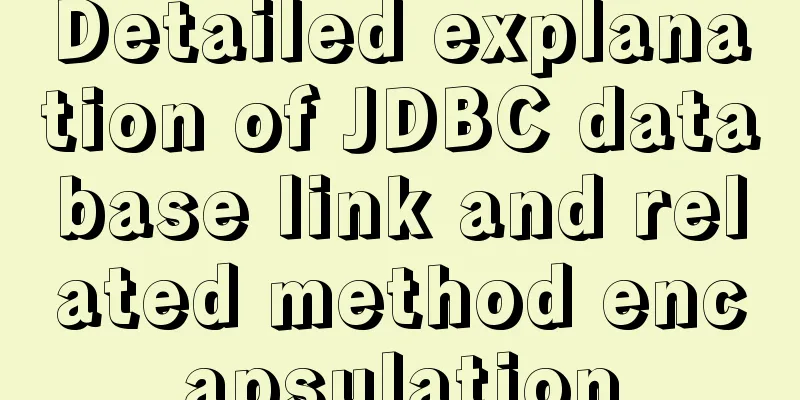Detailed explanation of prototypes and prototype chains in JavaScript

Prototype chain diagram
Essential knowledge for prototyping To understand the prototype, you must understand three properties: 1.__proto__ and constructor attributes are unique to objects; 2. The prototype property is unique to functions; 3. In js, functions are also a type of object, so functions also have properties __proto__ and constructor; Five rules of prototype: 1. All reference types (objects, arrays, functions) have object characteristics, that is, they can freely extend properties 2. All reference types (objects, arrays, functions) have a __proto__ (implicit prototype) attribute, which is a normal object 3. All functions have a prototype (explicit prototype) property, which is also a normal object 4. All reference types (objects, arrays, functions) __proto__ values point to the prototype of its constructor 5. When trying to get the property of an object, if the variable itself does not have this property, it will look for it in its __proto__ prototype property (display prototype)First create a constructor
var Parent = function(){
}
//Define a function, it is just an ordinary function var p1 = new Parent();
//Through the keyword new, Parent becomes a constructor //Creates an instance of a Parent constructor p1
Parent is the constructor, Parent.prototype is the prototype
The properties and methods added to proto property (implicit prototype)The __proto__ property is unique to objects (including functions). Every object has a __proto__ property, which points to the prototype object of the object. p1.__proto__ === Parent.prototype; // true __proto__ is usually called the implicit prototype, and prototype is usually called the explicit prototype. It can be said that the implicit prototype of an object points to the explicit prototype of the constructor of the object. Then the property methods defined on the explicit prototype are passed to the instance of the constructor through the implicit prototype. This way, the instance can easily access the methods and properties on the constructor prototype. The implicit prototype of Parent.prototype.__proto__ === Object.prototype; //true
This introduces the concept of prototype chain. When Of course, if it is not found on Object.prototype, it will look for it in The constructor propertySince the constructor function accesses the prototype through prototype, the prototype should also be able to access the constructor function through some means, which is the constructor. As in the previous example, p1 is an object, and the constructor of p1 is Parent(). Parent's constructor is Function()
p1.constructor => f Parent{}
Parent.constructor => f Function() { [native code] }
Function.constructor => ƒ Function() { [native code] }
Function is the root constructor of all functions. From the example, we can see that
SummarizeThis article ends here. I hope it can be helpful to you. I also hope you can pay more attention to more content on 123WORDPRESS.COM! You may also be interested in:
|
<<: Pure CSS to achieve left and right drag to change the layout size
>>: Examples of using html unordered list tags and ordered list tags
Recommend
3 different ways to clear the option options in the select tag
Method 1 Copy code The code is as follows: documen...
Detailed description of nginx from compilation and installation to configuration file description in Chinese
This article introduces Nginx from compilation an...
Linux uses iptables to limit multiple IPs from accessing your server
Preface In the Linux kernel, netfilter is a subsy...
Implementation of nginx flow control and access control
nginx traffic control Rate-limiting is a very use...
JS ES new feature of variable decoupling assignment
Table of contents 1. Decoupled assignment of arra...
HTML tags explained
HTML tags explained 1. HTML tags Tag: !DOCTYPE De...
Docker Tutorial: Using Containers (Simple Example)
If you’re new to Docker, take a look at some of t...
Detailed explanation of JavaScript onblur and onfocus events
In HTML pages, visual elements such as buttons an...
WeChat applet wxs date and time processing implementation example
Table of contents 1. Timestamp to date 2. Convert...
Use of Linux relative and absolute paths
01. Overview Absolute paths and relative paths ar...
Complete steps for uninstalling MySQL database
The process of completely uninstalling the MySQL ...
MySQL full-text index to achieve a simple version of the search engine example code
Preface Only Innodb and MyISAM storage engines ca...
Comparison of the advantages of vue3 and vue2
Table of contents Advantage 1: Optimization of di...
CenterOS7 installation and configuration environment jdk1.8 tutorial
1. Uninstall the JDK that comes with centeros fir...
Specific use of Bootstrap5 breakpoints and containers
Table of contents 1. Bootstrap5 breakpoints 1.1 M...













